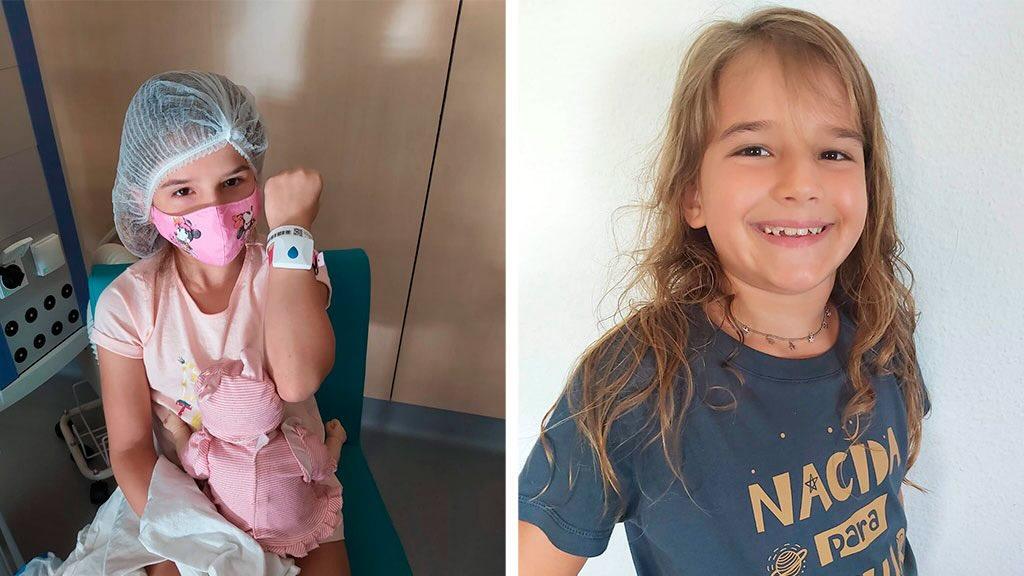
This patient has neurofibromatosis, a neurocutaneous disease that has caused her to develop several benign tumours in her head and neck.
Type 1 neurofibromatosis and tuberous sclerosis are two neurocutaneous diseases that can cause tumours in any organ in the body. These tumours are benign in a significant proportion of cases, but they can become malignant over time.
This is exactly what happened to Alma. The 12-year-old girl from Tarragona was born with neurofibromatosis, though her family did not know until she was diagnosed at age three. However, her mother noticed the first symptoms of the disease when the girl was only a few months old. ‘Since she was born with not much hair, I immediately noticed she had a small bump on the back of her head. Over the following weeks, the bump grew and I brought it up with the pediatrician, who showed no concern,’ recalls Verónica.
She got the same response when she brought up that the girl had small blemishes on her skin, or when she expressed her concerns that Alma had not progressed in her psychomotor skills like other children her age. ‘They told me not to worry,’ remembers Verónica, ‘that every child had a different pace, it was all part of normal development. And being a first-time mother, I thought I was perhaps worrying too much.’ One of the main hurdles for diagnosing rare diseases, like neurofibromatosis, is that they are so uncommon that, at times, even pediatricians are unaware of them.
It was only after much insistence that Verónica was able to have Alma tested. ‘They referred us to Vilanova Hospital for an X-ray, but since they couldn't clearly see what was there, they referred us to the SJD Barcelona Children's Hospital for an MRI scan. There, they immediately diagnosed Alma with type 1 neurofibromatosis,’ she notes.
As well as the tumour in her head, Alma also had a few more in her neck. ‘When they broke the news, it was very difficult for us. Even though you shouldn't, you end up looking on the internet, where you only read about the worst cases and you lose hope… At the time, I was also pregnant with my second child, and, thanks to the genetic screening they performed on Alma, we learned that the disease wasn't inherited from us. It developed on its own, which is called a de novo variant. That helped ease our concerns somewhat, because we knew that Alma hadn't gotten her disease from us, and that it was unlikely that the child we were expecting would also have the disease.
In Alma's case, doctors were unable to remove the tumour, so they opted for medication to treat it and reduce it, or, if not that, at least slow its growth. The girl underwent treatment and started being monitored by the team at the SJD Neurocutaneous Diseases and Cancer Predisposition Unit. Staff at this unit closely monitor patients with syndromes that can predispose them to having cancer. The aim is to provide a diagnosis for any cancer that is present as soon as possible and treat it. In Alma's case, this monitoring led to staff detecting that the tumour in her head had become malignant when the girl was nine years old, six years after the first diagnosis. She had to have surgery to extract the majority of the tumour and then have radiotherapy. Now she has recovered and is leading a totally normal life.
‘Thanks to years of monitoring, they immediately detected that the tumour in Alma's head had become malignant and were able to treat it. We are so thankful to Dr Héctor Salvador because, anytime we've had a problem, he has helped us deal with it straight away,’ notes the mother.




